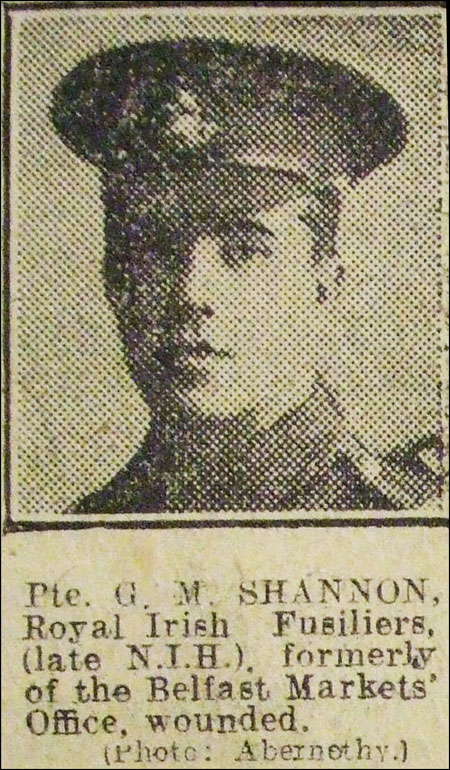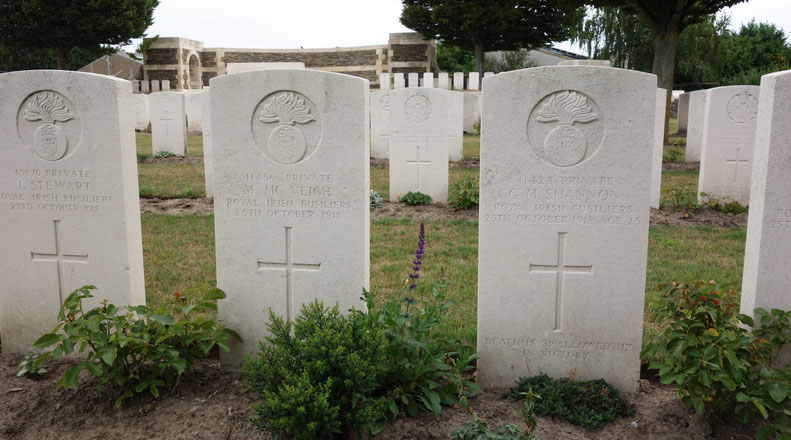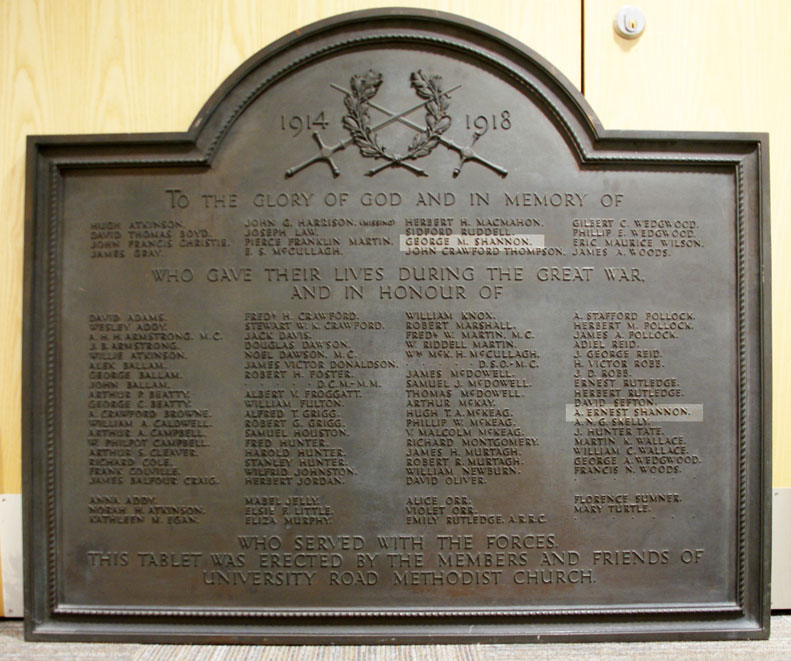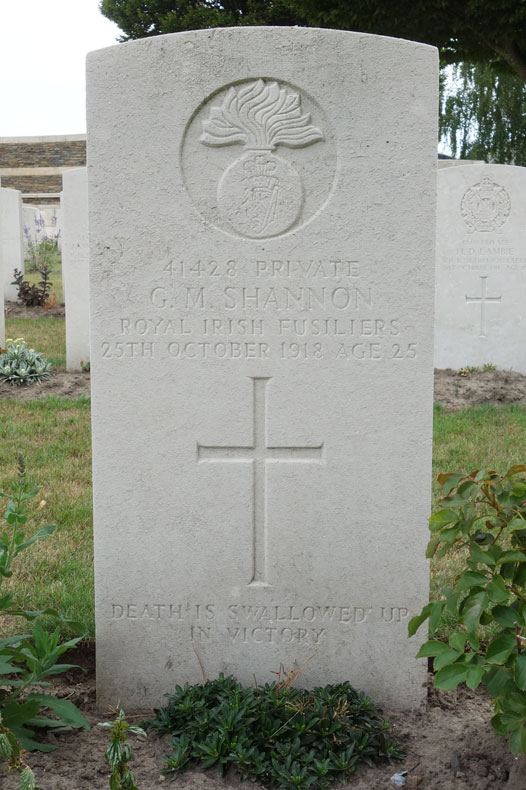![]() In memoriam
In memoriam ![]()
Private George Moorhead Shannon

George Moorhead Shannon was born on 10 May 1893 at 55 Maryville Street, Belfast, the second of five children of Royal Irish Constabulary constable (later sergeant) Francis Shannon and his wife Rebecca (nee Darragh). By 1911 he was living with his family in Oceanic Avenue, Belfast, and working as a clerk in the Markets Department of the Belfast City Corporation.
Shannon enlisted in the North Irish Horse at Antrim on 29 September 1915 (No.1734). On 27 July the following year he embarked for France, where he was posted to E Squadron, which was then part of the 1st North Irish Horse Regiment, serving as corps cavalry to VII Corps.
In September 1917 the 2nd North Irish Horse Regiment was dismounted and most of its men, together with some surplus men from the 1st Regiment, were trained as infantrymen and transferred to the 9th (Service) Battalion, Royal Irish Fusiliers – renamed the 9th (North Irish Horse) Battalion. Shannon, like most of the men, was formally transferred on 20 September. He was issued regimental number 41428. While most joined the battalion in the field at Ruyaulcourt in October, it appears that Shannon did not join them until 9 December 1917. He was then posted to C Company.
Shannon was granted leave from 31 December 1917 to 14 January 1918, and then from 16 to 31 March, both most likely in relation to a case that his father had brought against a Methodist minister who he accused of persuading his wife to leave him in 1914. Shannon testified in the court hearing on 26 March.
On his return to France Shannon saw action with the 9th (NIH) Battalion during the German offensive on the Ypres front. Around 20 April he received a shrapnel wound to his left foot. However by 16 May he had re-joined his battalion.
From August to November 1918 the 9th (NIH) Battalion saw much fighting in Belgium during the Advance to Victory offensive. On 25 October the battalion was near Ansegham – the last day's fighting it would see during the war. The war diary for that day reads:
Weather fine but dull towards midday. Battalion in support to 12th Royal Irish Rifles in attack on line J.36.c.0.4 – J.36.a.3.2 through G. in BERGSTRAAT – through N. in ANSEGHAM to Northern boundary at J.24.c.0.0. Heavy Machine Gun opposition was encountered and an advance of about 1,000 yards was made. Strength of Battn. going into action 12 officers and 276 O.R's. Casualties Lieut. F.W. Vint and 2 Lieut. J. Darling, M.C. wounded, 7 O.R's killed and 37 O.R's wounded.
Private Shannon was one of the men killed that day. Following the war his body was recovered from its burial site west of Heirweg (map ref. 29.J.15.a.3.9) and reburied in Harlebeke New British Cemetery, West-Vlaanderen, Belgium, grave VI.B.13. His gravestone inscription reads:
41428 PRIVATE
G. M. SHANNON
ROYAL IRISH FUSILIERS
25TH OCTOBER 1918 AGE 25
DEATH IS SWALLOWED UP
IN VICTORY
Due to an administrative error, Private Shannon's parents were not formally notified of his death until June 1920.
Private Shannon's younger brother, Alfred Ernest, also served in the war, as a gunner in the Canadian Field Artillery.


Belfast Corporation memorial tablet

University Road Methodist Church memorial tablet
,-25-10-1918,-Knockbreda-Cemetery,-Peter-McCabe.jpg)
Grave surround at the family plot in Knockbreda Cemetery
Harlebeke Cemetery images Copyright © Phillip Tardif with all rights reserved as set out in this Use of Material policy. Memorial tablet and newspaper image kindly provided by Nigel Henderson, Researcher at History Hub Ulster. Knockbreda image courtesy of Peter McCabe, via Nigel Henderson.

